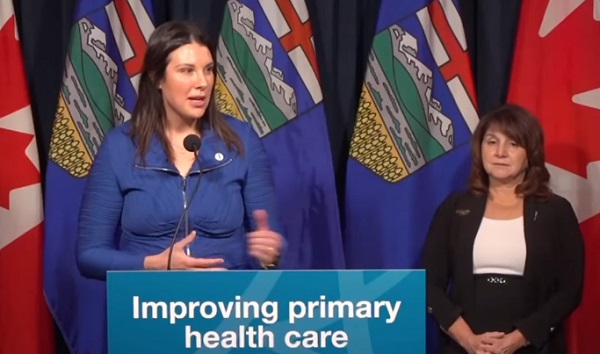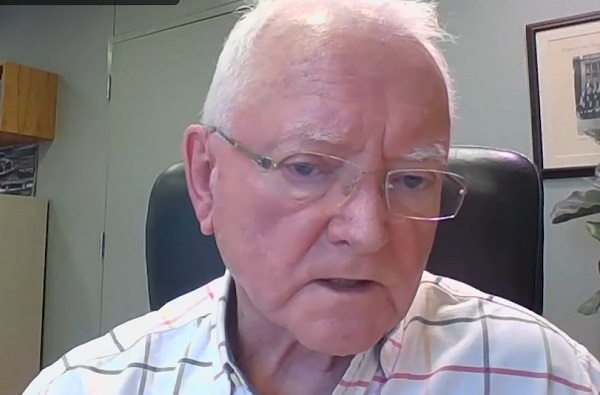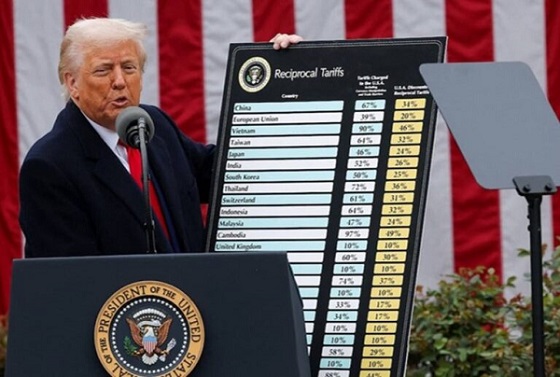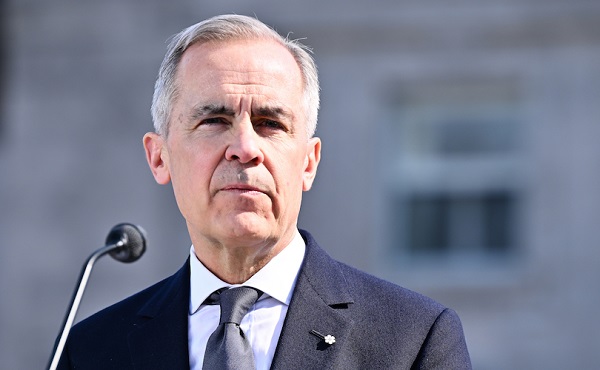Alberta
Alberta aggressively recruiting resident physicians from across Canada

Competitive compensation for resident physicians
A new compensation agreement for resident physicians has been reached, which will help to retain and recruit more physicians throughout Alberta.
Alberta’s government, in partnership with Alberta Health Services (AHS), the University of Alberta, University of Calgary and the Professional Association of Resident Physicians of Alberta has reached a four-year agreement that provides competitive and fair-market compensation for physicians in training.
The negotiated agreement provides wage increases of three per cent in each of the first two years, and two per cent in each of the last two years. It also includes market adjustments that put Alberta on par with other western Canadian medical schools.
Ensuring resident physicians receive competitive, fair-market compensation while they train and provide services across the province will help stabilize and strengthen acute health care today while bringing medical students and ultimately more physicians to the province to support the province’s future health needs.
“Alberta’s government is grateful for all the hard work resident physicians put in as they complete their training. We are pleased to see that a new agreement has been reached and look forward to more physicians calling Alberta home.”
“We are extremely grateful to all of our resident physicians, who play a vital role in caring for Albertans and supporting our front-line physicians and health care teams. This agreement will help us recruit medical students and encourage them to practise in this province.”
Rural and Remote Family Medicine Resident Physician Bursary Pilot Program
The agreement builds on actions Alberta’s government is taking to make the province a more attractive place for medical students and resident physicians to study and practise. On Oct. 3, Alberta’s government announced measures to improve health care in rural and remote communities through the new Rural and Remote Family Medicine Resident Physician Bursary Pilot Program. The bursary program is part of the province’s Rural Health Action Plan.
The pilot program will provide up to $8 million annually for the next two years to medical students in their final year of an undergraduate medical program when they are matched with a family medicine residency program at the University of Alberta or University of Calgary, or to residents currently completing a family medicine residency at either university regardless of their year of study. In return, bursary recipients will commit to delivering comprehensive patient care in eligible communities for three years after completing their residency.
“With this agreement, Alberta strengthens its position as an attractive destination for resident physicians across Canada. By enhancing compensation, training and working conditions, we ensure Alberta recruits and retains the brightest medical talent to serve our communities and shape the future of health care.”
“The University of Alberta is pleased collaborations with our partners have resulted in an agreement that reflects the critical impact resident physicians make in our health care system so all Albertans receive the care they need.”
“Remuneration, respect, retention and recruitment of rural generalists are key to elevating rural hospitals to becoming rural centres of excellence. With this agreement and bursary pilot program, the Alberta government is recognizing rural health as being different, requiring separate and unique solutions for our communities that are mutually beneficial in enhancing the health of rural Albertans.”
Quick facts
- Resident physicians have graduated medical school but are completing post-graduate training in a residency program to obtain their licence to practise. With residency programs requiring an additional two to seven years of post-graduate training, most resident physicians spend more than 10 years training to become fully licensed physicians and surgeons.
- The Professional Association of Resident Physicians of Alberta represents more than 1,660 resident physicians in Alberta.
- The current agreement between AHS, the University of Alberta, University of Calgary and the association ended on June 30, 2024.
- The resident physician agreement is funded by Alberta Health through a grant to AHS and the universities.
Related information
Related news
- Improving health care in rural and remote Alberta (Oct. 3, 2024)
Alberta
Medical regulator stops short of revoking license of Alberta doctor skeptic of COVID vaccine

From LifeSiteNews
The Democracy Fund has announced that COVID-skeptic Dr. Roger Hodkinson will retain his medical license after a successful appeal against allegations of ‘unprofessional conduct’ by the College of Physicians and Surgeons of Alberta.
A doctor who called for officials to be jailed for being complicit in the “big kill” caused by COVID measures will get to keep his medical license thanks to a ruling by a Canadian medical regulator.
The Democracy Fund (TDF) announced in an April 4 press release that one of its clients, Dr. Roger Hodkinson, will retain his medical license after filing an appeal with the College of Physicians and Surgeons of Alberta (CPSA) over allegations of “unprofessional conduct regarding 17 public statements made in November 2020 and April 2021.”
Hodkinson had routinely argued against the dictates of public health and elected officials and “presented an alternative perspective on COVID-19, including the efficacy of masking and vaccines,” TDF noted.
In 2021, Hodkinson and Dr. Dennis Modry publicly blasted the then-provincial government of Alberta under Premier Jason Kenney for “intimidating” people “into compliance” with COVID-19 lockdowns.
In 2022, Hodkinson said that leaders in Canada and throughout the world have perpetrated the “biggest kill ever in medicine’s history” by coercing people into taking the experimental COVID injections and subjecting them to lengthy lockdowns.
These statements, among others, led the CPSA to claim that Hodkinson had promoted inaccurate or misleading information. “However, following negotiations with lawyers for The Democracy Fund, the CPSA limited its claims to arguing that Dr. Hodkinson’s comments violated the ethical code and extended beyond the scope of a general pathologist.”
Thus, Hodkinson did not “concede that any of his statements were false,” but “acknowledged that his criticisms of other physicians technically breached the Code of Ethics and Professionalism,” the group explained. “He also admitted that he should have clarified that his views were outside the scope of a general pathologist.”
Instead of having his license revoked, TDF stated that Dr. Hodkinson received a “caution” and will have to “complete an online course on influence and advocacy.”
“However, he did not concede that any of his statements were misinformation, nor did the tribunal make such a determination,” noted lawyer Alan Honner.
While Hodkinson received a slap on the wrist, a number of Canadian doctors have faced much harsher sanctions for warning about the experimental vaccines or other COVID protocols such as lockdowns, including the revocation of their medical licenses, as was the case with Dr. Mark Trozzi and others.
Some of Hodkinson’s warnings seem to have been vindicated by the current Alberta government under Premier Danielle Smith, who commissioned Dr. Gary Davidson to investigate the previous administration’s handling of COVID-19.
Davidson’s report, which was made public earlier this year, recommended the immediately halt of the experimental jabs for healthy children and teenagers, citing the risks the shots pose.
Alberta
Province introducing “Patient-Focused Funding Model” to fund acute care in Alberta

Alberta’s government is introducing a new acute care funding model, increasing the accountability, efficiency and volume of high-quality surgical delivery.
Currently, the health care system is primarily funded by a single grant made to Alberta Health Services to deliver health care across the province. This grant has grown by $3.4 billion since 2018-19, and although Alberta performed about 20,000 more surgeries this past year than at that time, this is not good enough. Albertans deserve surgical wait times that don’t just marginally improve but meet the medically recommended wait times for every single patient.
With Acute Care Alberta now fully operational, Alberta’s government is implementing reforms to acute care funding through a patient-focused funding (PFF) model, also known as activity-based funding, which pays hospitals based on the services they provide.
“The current global budgeting model has no incentives to increase volume, no accountability and no cost predictability for taxpayers. By switching to an activity-based funding model, our health care system will have built-in incentives to increase volume with high quality, cost predictability for taxpayers and accountability for all providers. This approach will increase transparency, lower wait times and attract more surgeons – helping deliver better health care for all Albertans, when and where they need it.”
Activity-based funding is based on the number and type of patients treated and the complexity of their care, incentivizing efficiency and ensuring that funding is tied to the actual care provided to patients. This funding model improves transparency, ensuring care is delivered at the right time and place as multiple organizations begin providing health services across the province.
“Exploring innovative ways to allocate funding within our health care system will ensure that Albertans receive the care they need, when they need it most. I am excited to see how this new approach will enhance the delivery of health care in Alberta.”
Patient-focused, or activity-based, funding has been successfully implemented in Australia and many European nations, including Sweden and Norway, to address wait times and access to health care services, and is currently used in both British Columbia and Ontario in various ways.
“It is clear that we need a new approach to manage the costs of delivering health care while ensuring Albertans receive the care they expect and deserve. Patient-focused funding will bring greater accountability to how health care dollars are being spent while also providing an incentive for quality care.”
This transition is part of Acute Care Alberta’s mandate to oversee and arrange for the delivery of acute care services such as surgeries, a role that was historically performed by AHS. With Alberta’s government funding more surgeries than ever, setting a record with 304,595 surgeries completed in 2023-24 and with 310,000 surgeries expected to have been completed in 2024-25, it is crucial that funding models evolve to keep pace with the growing demand and complexity of services.
“With AHS transitioning to a hospital-based services provider, it’s time we are bold and begin to explore how to make our health care system more efficient and manage the cost of care on a per patient basis. The transition to a PFF model will align funding with patient care needs, based on actual service demand and patient needs, reflecting the communities they serve.”
“Covenant Health welcomes a patient-focused approach to acute care funding that drives efficiency, accountability and performance while delivering the highest quality of care and services for all Albertans. As a trusted acute care provider, this model better aligns funding with outcomes and supports our unwavering commitment to patients.”
“Patient-focused hospital financing ties funding to activity. Hospitals are paid for the services they deliver. Efficiency may improve and surgical wait times may decrease. Further, hospital managers may be more accountable towards hospital spending patterns. These features ensure that patients receive quality care of the highest value.”
Leadership at Alberta Health and Acute Care Alberta will review relevant research and the experience of other jurisdictions, engage stakeholders and define and customize patient-focused funding in the Alberta context. This working group will also identify and run a pilot to determine where and how this approach can best be applied and implemented this fiscal year.
Final recommendations will be provided to the minister of health later this year, with implementation of patient-focused funding for select procedures across the system in 2026.
-

 Courageous Discourse2 days ago
Courageous Discourse2 days agoEurope Had 127,350 Cases of Measles in 2024
-

 Podcasts1 day ago
Podcasts1 day agoTrump’s Tariffs: The US, Canada, and the rest of the world
-

 2025 Federal Election1 day ago
2025 Federal Election1 day agoMark Carney Comes to B.C. and Delivers a Masterclass in Liberal Arrogance
-

 Alberta1 day ago
Alberta1 day agoProvince introducing “Patient-Focused Funding Model” to fund acute care in Alberta
-

 2025 Federal Election1 day ago
2025 Federal Election1 day agoPoilievre to invest in recovery, cut off federal funding for opioids and defund drug dens
-

 Business1 day ago
Business1 day agoTrump threatens additional 50% tariffs on China, urges ‘patience’
-

 Alberta1 day ago
Alberta1 day agoMedical regulator stops short of revoking license of Alberta doctor skeptic of COVID vaccine
-

 Business2 days ago
Business2 days agoTrump says tariffs on China will remain until trade imbalance is corrected





